Ice Melt and The Great Reveal
After months of white, white, nothing but white...it's so exciting to see green once again!
A quick warm welcome to our new subscribers! This newsletter aims to provide tips and tidbits that will help you create a more ecologically responsible landscape, but also to share the joy and excitement of the marvels of our ecosystems - like this one, about getting the first glimpse of green after many months of white. Thanks for joining!
It's one of my favourite times of the year! Although not for my dog, who doesn't like going for walks with me because I keep stopping, crouching down to examine every green thing I see and take way too many pictures in my never-ending attempt at capturing the beauty of life. Of course, it's only the evergreen life that can be seen right now, since all of the spring ephemerals and big summer bloomers are still hiding below the surface of the earth, waiting until their preferred temperatures arrive. But “only the evergreens” includes so many things! Lichens, mosses, liverworts, hornworts, wintergreen, partridgeberry, hepatica, sedges, strawberry, woodland phlox and more!
Exposed rocks and logs on the forest floor are some of the best places to find life poking out of the melting snow. From a distance, it appears that they are covered in fuzzy green, grey and brown stuff - but when you take a closer look, you can see so many different life forms, including lichens and bryophytes.

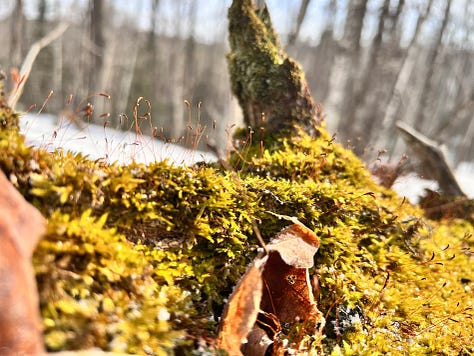
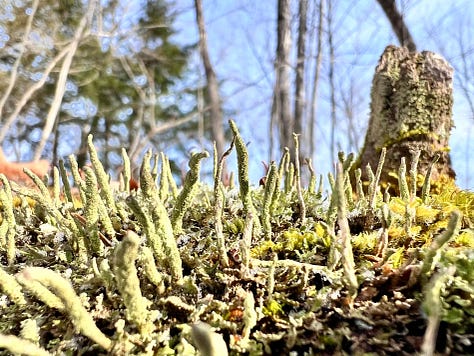
What are bryophytes?
Bryophytes are an ancient group of plants, which include liverworts, hornworts and mosses. They are non-vascular and non-flowering, meaning that instead of having roots and vascular tissue they absorb water and nutrients from the air through their surfaces, and rather than reproducing by seed, they reproduce by spores. Since they don’t need roots, they can grow in many places that vascular plants cannot, like on rocks and tree bark. Mosses have always captivated scientists, and to date there have been 1006 moss species identified in Canada, although in some parts of the country they have yet to be documented.
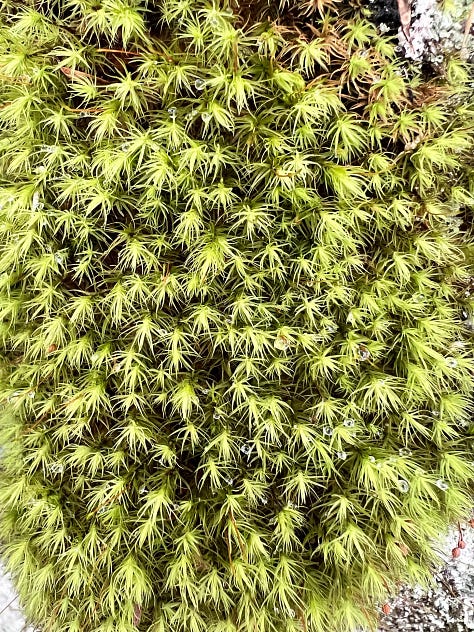
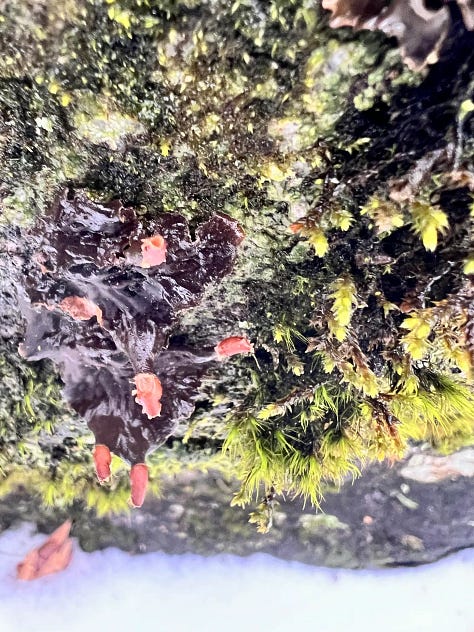
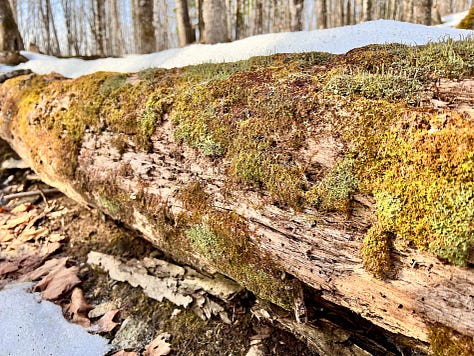
What are lichens?
Lichens are not plants! They are actually comprised of two or more organisms working in symbiosis; a fungus and an algae and/or cyanobacteria. The algae/cyanobacteria share sugars produced during photosynthesis with the fungi, and the fungi return the favour by sharing minerals and water absorbed from the air. They have adapted to survive desiccation that would otherwise kill vascular plants; going dormant until water becomes accessible, and then soaking it up like a sponge. Of the 15,000 species identified worldwide, 2000 are in Canada.



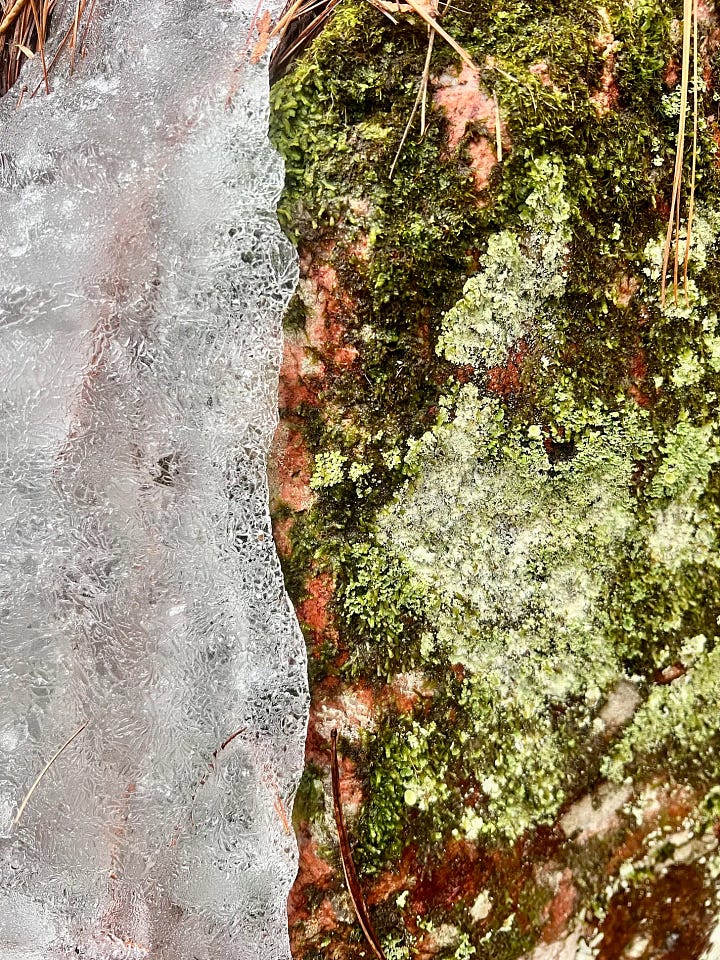
As the ice retreats, we also get a glimpse of vascular plants that hold their leaves throughout the winter.
Hepatica americana (hepatica, liverleaf) is among the earliest ephemerals to bloom in the forest. The blue, white or pink flowers attract early emerging sweat bees. Last year’s leaves are now a green and reddish colour. They have no trouble pushing through the layer of oak and maple leaves.

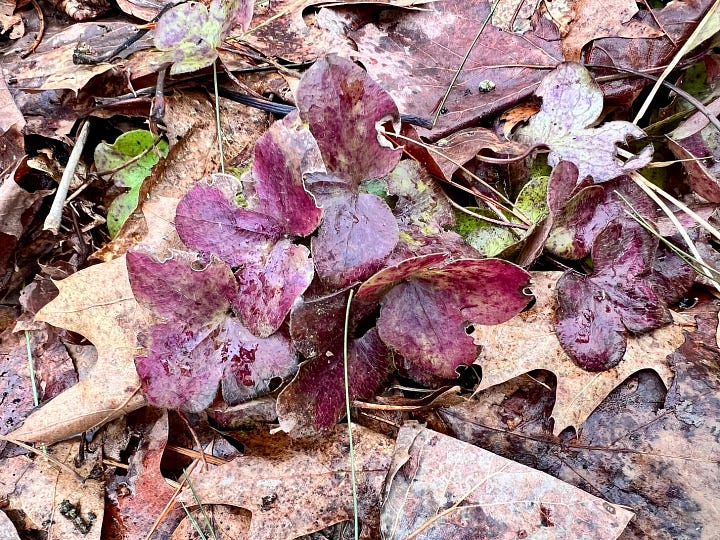
These Gaultheria procumbens (wintergreen) and Mitchella repens (partridgeberry) are growing below cedars and hemlocks, and easily emerge through deciduous leaf cover from the poplars, maples, birches and oaks nearby. The red berries they produce will feed birds (including partridges!) and small mammals. Wintergreen has a larger leaf than partridgeberry and releases a minty scent when torn (my kids refer to it as “toothpaste plant”).

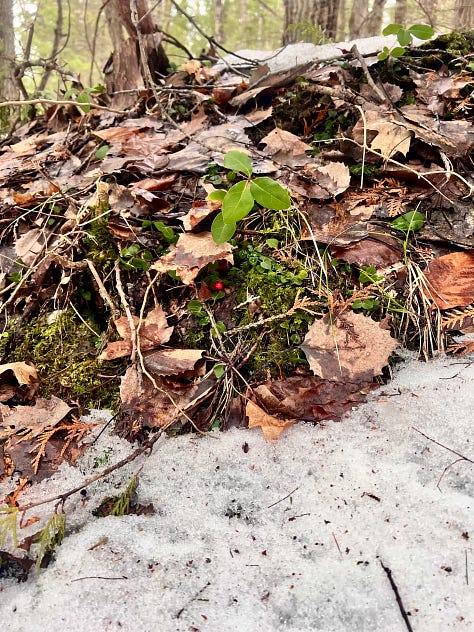

Phlox divaricata (woodland phlox) will bloom for about one month, and the pale lavender to pink flowers will attract long-tongued insects that are essential for pollination, like butterflies (swallowtails, gray hairstreaks), skippers, hummingbird clearwing moths and bumble bees. Other insects, like sweat bees and hoverflies, will be attracted to the pollen that is easier to access than the nectar.
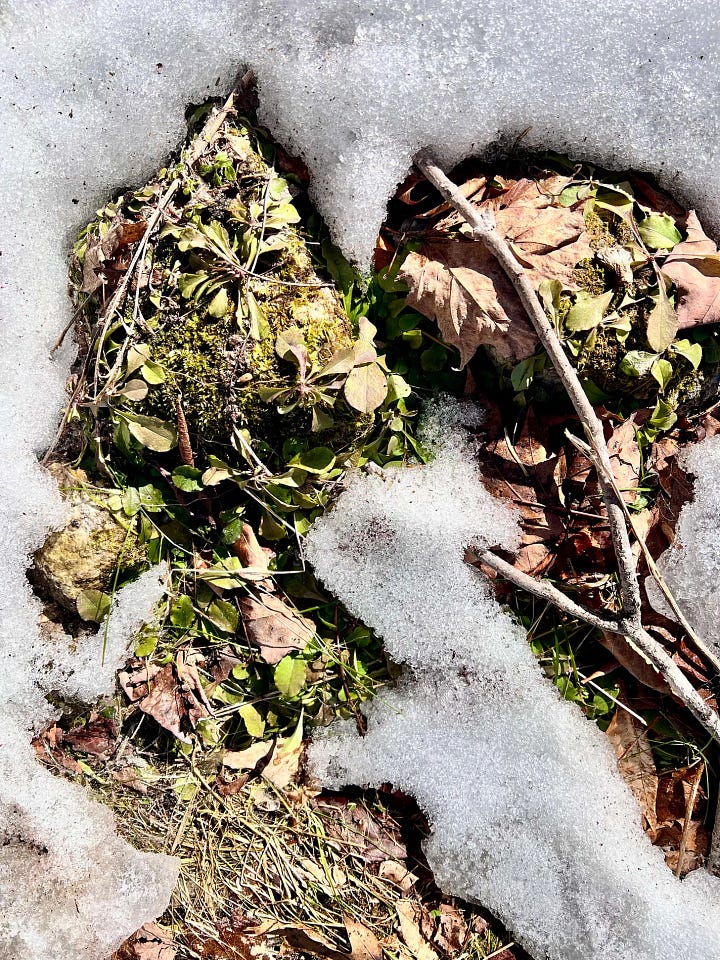
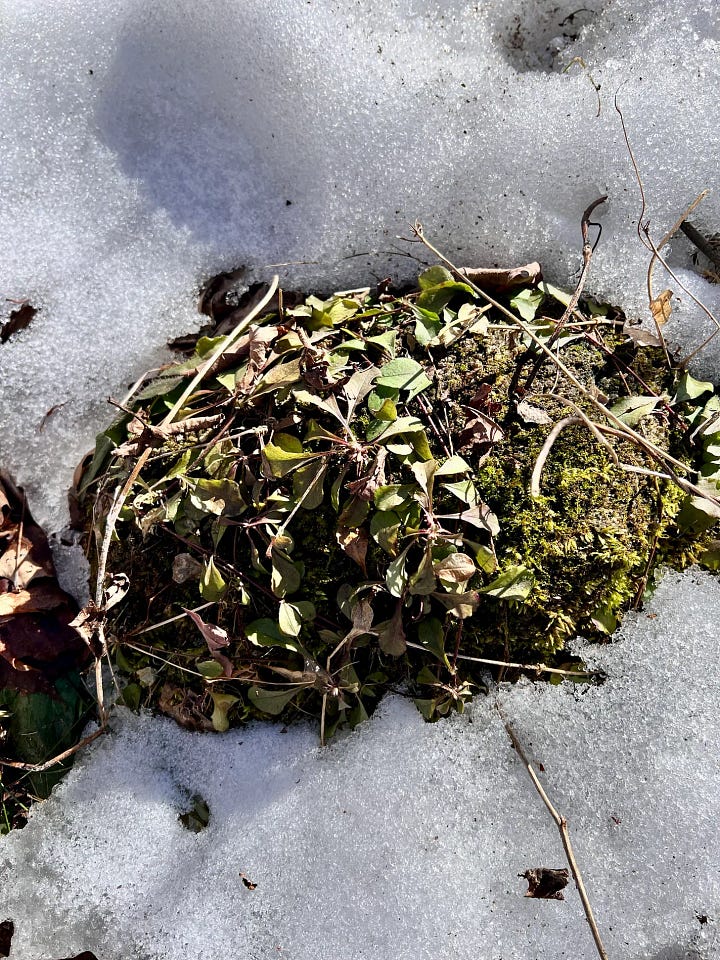


We’re soon to be in hyper-spring mode, when new plant and insect species start appearing faster than we can document them! So get out there, take a slow walk and see what quiet magic is starting to unfold around you.
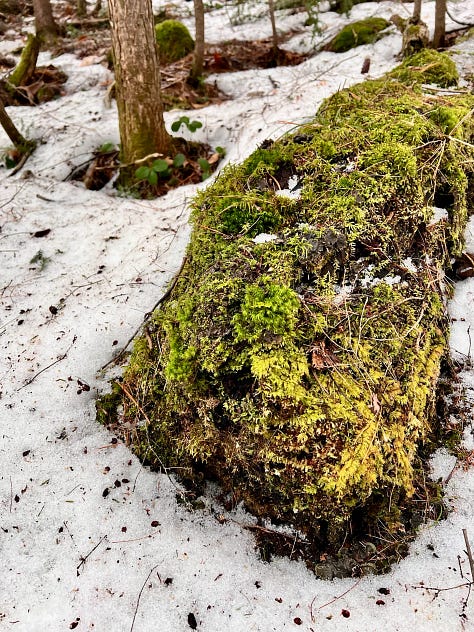
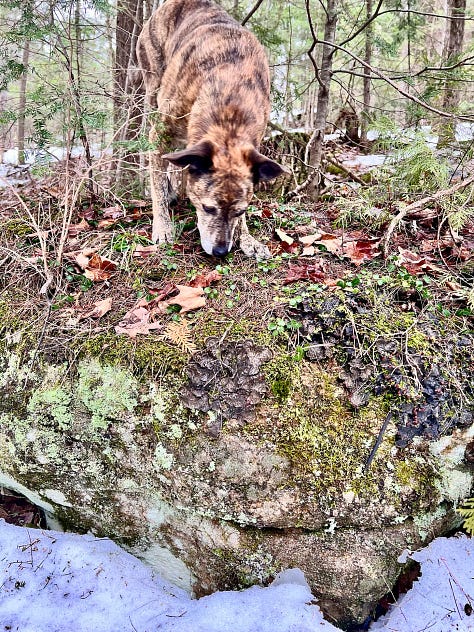
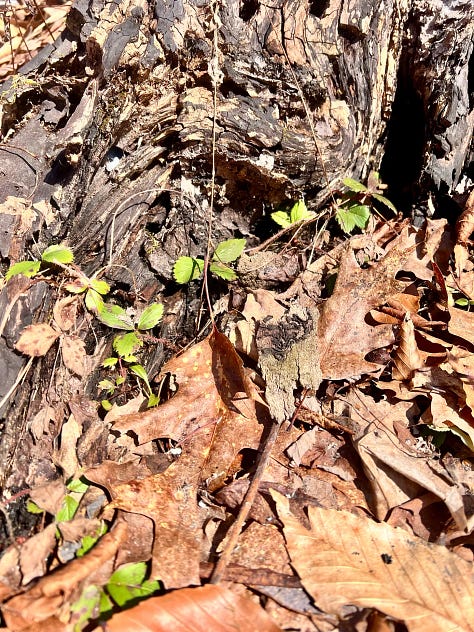
Interested in finding out what’s growing on your land? Send me a message to set up a personalized consultation.
Follow our social media pages for more pics and tidbits
Resources:
Government of Canada: Wild Species 2010: chapter 6
Government of Canada: Wild Species 2010: chapter 7
University of Wisconsin-Madison: Woodland Phlox, Phlox divaricata





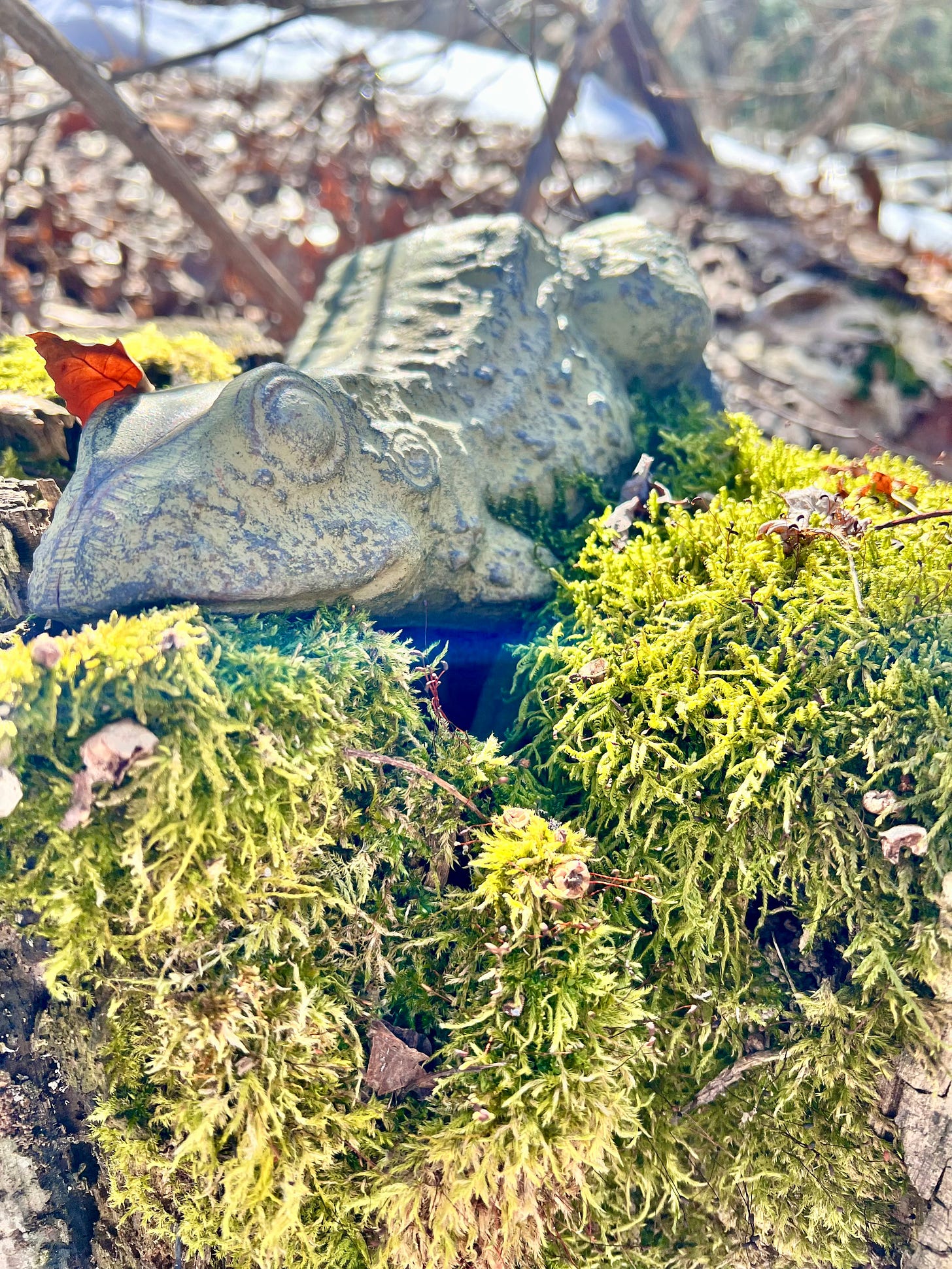
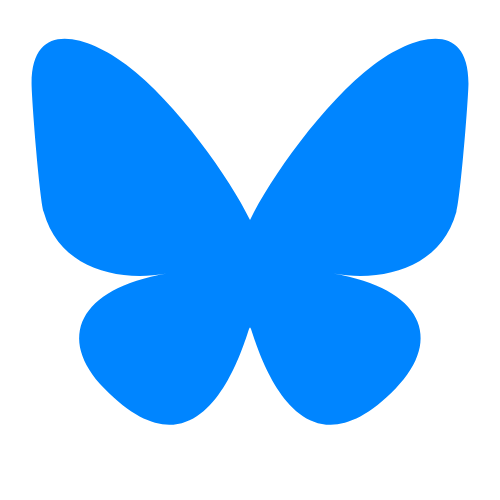


Thanks for the lovely woodland walk this morning! You brought spring-hope as the wind howls and the snow blows around here. I can hear the geese in their morning arrival, their honks adopting a complaining tone!